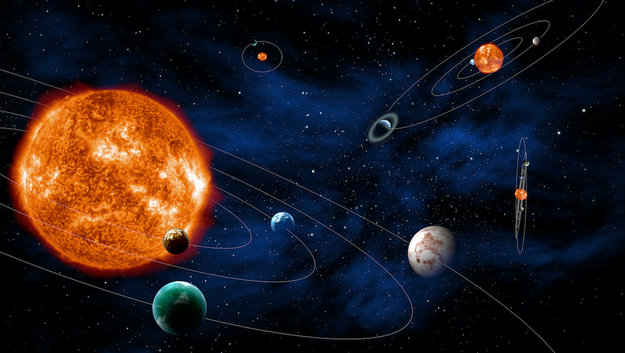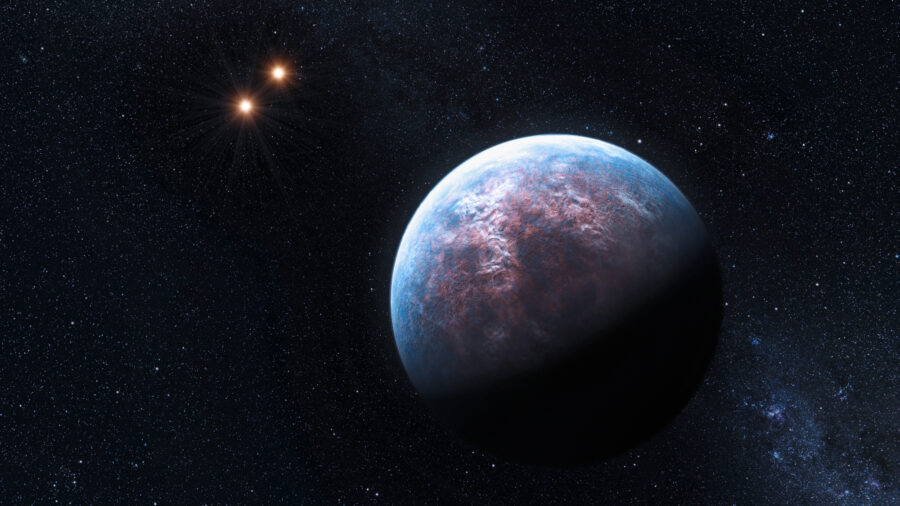Scientists Discover Planets Behaving In A Way Never Seen Before

Astronomers think it’s possible that they’ve discovered evidence of a Trojan planet system—a system in which two planets share the same orbit. It’s a possibility that has long been hypothesized but has never yet been observed. That is unless these recent findings are confirmed according to scientists’ suspicions.
Scientists finally found evidence of trojan planets, two planets that share an orbit, in a distant galaxy.
The journal Astronomy and Astrophysics recently published findings of astronomers studying the possible Trojan planet system orbiting PDS 70, which is a young star that appears in the Centaurus constellation. The system is a distance of some 370 light-years from Earth and, if verified, would be the first-ever such discovery by scientists. And so far, the evidence looks good.
The possible Trojan planet is trailing a huge gas exoplanet, PDS 70b, the size of which is roughly three times that of Jupiter. A debris cloud is twice as massive as our Moon in the same orbital path. This mass, astronomers surmise, might either be a new planet beginning to form or the remains of one that was rent asunder.
Researchers considered trojan planets to be “like unicorns,” theoretically possible, but never observed until now.
A co-author of the study, Jorge Lillo-Box, who is a researcher at Madrid’s Centre for Astrobiology, said in a statement that Trojan planets (or “exotrojans”) have to this point been “like unicorns.” While they are theoretically possible, they have never been confirmed to have been observed. The discovery of a system containing this phenomenon would be a long-held hypothesis coming to life.
The concept of Tojan planets is based on the known and common existence of Trojan bodies. These rocky asteroid bodies share an orbital path with a planet and occur across our solar system, including thousands of asteroids on the orbital path of Jupiter. If these bodies can exist along the orbits of planets, astronomers have speculated, then it could be possible for entire planets to do the same, given the right conditions.

Those conditions that could allow the existence of a Trojan planet have, so far, been so exceedingly rare as to remain heretofore undiscovered. The prospect of discovering planets that share the same orbit, says Olga Balsalobre-Ruza, is “mind-blowing.”
Trojan planets can be found in science fiction, with Marvel‘s Counter-Earth as just one example.
Balsalobre-Ruza would know; she’s the lead author of the study and a postdoctoral researcher at the Centre for Astrobiology. Together, she and Lillo-Box have embarked on a potentially auspicious discovery that could place them in the history books of the field of astronomy.
Along with their research team, the pair searched for Trojan planets in data from the Atacama Large Millimeter/submillimeter Array (ALMA), an array of radio telescopes in Chile. They used the array to analyze the PDS 70 system, where they found both the gas giant PDS 70b and the debris cloud, which was in the same position where they would expect to find a Trojan planet. But it will be a while before they can confirm their findings.
If they have indeed found evidence of Trojan planets, they won’t know for sure until at least 2026, when they will be able to measure the orbit of the PDS 70b and the debris cloud around the star PDS 70. If their findings are confirmed, they will become the discoverers of an astronomical unicorn.












